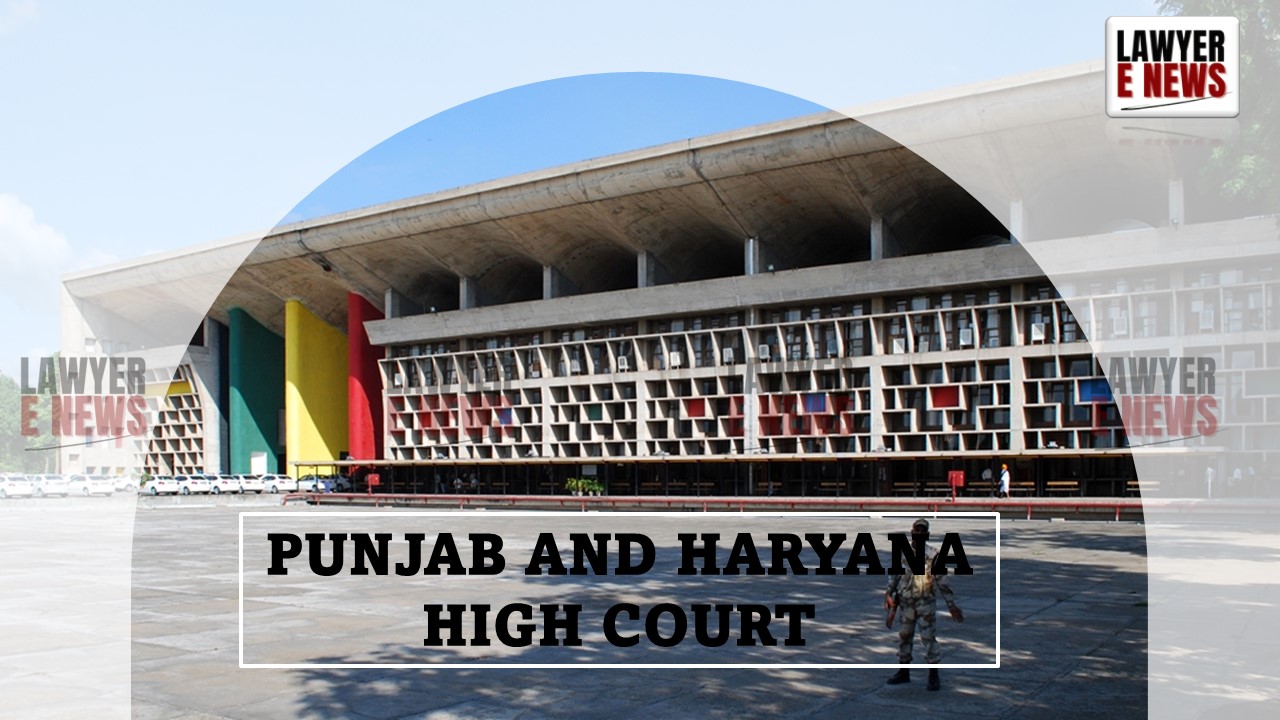-
by Admin
17 December 2025 12:49 PM



In a recent judgement, Punjab and Haryana High Court addressed the boundaries of magistrates' discretion regarding investigation procedures under the Code of Criminal Procedure, specifically Section 156(3). The Court dismissed Divyanshu Mehta’s petition to order a fresh investigation in an ongoing corporate dispute involving alleged misappropriation and embezzlement by company directors. Justice Vinod S. Bhardwaj upheld that, once a magistrate has taken cognizance and initiated proceedings under Chapter XV of the Cr.P.C., ordering a further investigation under Section 156(3) is impermissible.
The case arose from a complaint by Divyanshu Mehta against directors of Trimurti Resorts Private Limited, alleging embezzlement and falsification of accounts. FIR No. 88 was filed in 2019, under sections related to criminal breach of trust and fraud. The FIR alleged misappropriation amounting to ₹37.91 lakh and misreporting of asset values and financial data, including write-offs and unsecured loans. Following an extensive investigation and a series of petitions, an SIT report was submitted, concluding that no criminal offense was found and deeming the dispute primarily civil.
However, Mehta filed a protest petition, which was treated as a complaint by the Sub-Divisional Judicial Magistrate (SDJM) in February 2022. Subsequently, Mehta sought an order under Section 156(3) to direct further investigation, which was denied by the SDJM, prompting the present writ petition.
The primary legal question was whether a magistrate, after taking cognizance of a case, could direct a fresh investigation under Section 156(3). The petitioner argued that further investigation was essential due to an alleged incomplete probe by the SIT and that the magistrate should oversee a renewed inquiry. The petitioner cited precedents, including Sakiri Vasu v. State of Uttar Pradesh (2008) and Mukhtar Zaidi v. State of Uttar Pradesh (2024), arguing that the magistrate held an implied power to ensure thorough investigations.
Justice Bhardwaj clarified the distinct roles of Section 156(3) and Section 202 Cr.P.C., drawing upon Devarapally Lakshminarayana Reddy v. V. Narayana Reddy (1976) and Ramdev Food Products (P) Ltd. v. State of Gujarat (2015). He noted that Section 156(3) applies only at the pre-cognizance stage, allowing the magistrate to direct the police to investigate, whereas Section 202 enables limited inquiry after cognizance has been taken. The judgment emphasized that post-cognizance, further investigation through Section 156(3) is legally unsustainable.
Justice Bhardwaj stated, “Once a Magistrate has taken cognizance under Section 190 of the Code, the option to order an investigation under Section 156(3) is no longer available.” He referenced the Supreme Court’s decisions in Kailash Vijayvargiya v. Rajlakshmi Chaudhuri (2023) and Mona Panwar v. High Court of Judicature at Allahabad (2011), underscoring that treating a protest petition as a complaint aligns with established procedure under Cr.P.C.
Additionally, the Court found the petitioner's reliance on Sakiri Vasu misplaced, as the facts differed significantly. In Sakiri Vasu, the magistrate had not taken cognizance, and hence, an order under Section 156(3) was viable. Here, the SDJM’s prior cognizance and decision to treat the protest as a complaint negated any legal ground for a new investigation under Section 156(3).
The High Court dismissed Mehta’s petition, reinforcing the procedural limitations on magistrates' investigative powers post-cognizance. This decision reinforces that once a complaint is formally cognized, the magistrate cannot revert to the pre-cognizance mechanism of Section 156(3) but must proceed under Chapter XV, following established protocol.
Date of Decision: October 4, 2024
